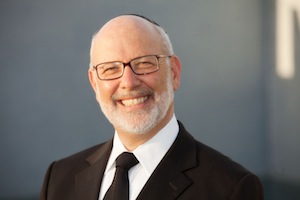Engaging in the Story
Media technology enables hitherto unimagined dramatic power. Special effects, with their synchronized visual and audial impact stun audiences again and again. The news media use visual impact to shape public opinion and manipulate public sympathies. Sitting in a movie seat or in front of a TV, demands no effort to engage in the drama. The drama is so compelling that it leaves an audience little choice about engaging in it.
Theater is a little different. Unless it is a major Broadway-style musical production, theater requires more attentiveness. You need to follow the dialogue, catch the humor and understand the sequences. The subtleties are generally more difficult to note than in the movies. Elizabethan theater did not even have props of any kind, everything was left to the imagination, requiring still more audience engagement than most of today’s theater.
Reading a good book requires still more engagement and attention. The investment of time and of self in reading is more than that of any other art form. The subtleties are greater, the characters develop over a longer time, and the story line needs to be held together for longer. There is less instant drama.
These differences in art forms explain the differences between various Moeid Moments (Festive times in the Jewish calendar). If Mattan Torah (the giving of the Torah at Sinai on Shavuot) is the ultimate dramatic production with unbridled visual effects, then Purim is the subtle work of literature. Mattan Torah was felt, all of it in one dramatic moment. It was compelling in its essence. It could not be denied by anyone present. That is why we are told[1] that Hashem held the mountain over them and threatened them with extinction if they did not accept the Torah. The Maharal of Prague[2] makes it very clear that this Chazal is not to be taken literally. It simply means that the revelation was so compellingly powerful that the Nation had no option but to accept the Torah.
Mystery and Allure
The Megillah (Book of Esther) is very different. It is a story of events that the cynic could interpret as coincidence. The very meaning of the word Megillah is a process of revelation rather than a momentof revelation (Giluy). The literal meaning of Megilah (scroll) is a book that unfolds, slowly: as one section becomes visible the previous one disappears. This is the essence of Tzeniut, the quintessence of Esther (I shall hide).
The Megillah of Esther presents us with a slowly unfolding mystery. It engages us with its subtle allure rather than with the brazenness of its miracle. It calls to us to find its secret, the name of is Hashem concealed in it waiting for us to discover and uncover it. The acceptance of Kiyemu veKiblu (Israel’s reacceptance of the Torah at the time of Purim without the compulsion of G-d’s overwhelming presence) was of a different quality from the Na’aseh veNishmah (“we shall observe all the commandments and we shall continue to seek to understand them”) of Sinai.
We needed the incontrovertible revelation of Sinai in order to know what we were looking for in Shushan. We needed a face-to-face experience with Hashem to recognize Him later when He hid Himself from us. Emunah (belief) is not about inventing something that is entirely new to us, it is about the discovery of that which we already know, that which is embedded deep into our national DNA. True Emunah comes from our discovery of G-d, not from His revelation to us.
Finding G-d
Megilah is the model of our encounter with Hashem today. G-d is not evident in the reading any single chapter of the Megillah. It is only when you string the chapters together, that Hashem becomes central to the emergent pattern of its story, and the architect of each of its events. So too with our own lives: if we try to seek hashem in single events or short time frames it is often not easy to find Him. But as we travel the journeys of our lives and the scenes unfold for before us, we begin to see the Yad Hashem (hand of G-d) in absolutely everything. Hashem is in the phase of Hester Panim (a hidden face), that does not mean that He is absent any more than a child becomes absent when he or she hides from their friends. G-d’s hiding is a call to our seeking Him. For when we seek we engage in a much deeper way than we do when He reveals Himself before us in all His glory.
Only when we ourselves have resolved the mysteries of existence, when we have uncovered the Divine in every corner of the universe, will He no longer need to hide and a new era of man-G-d engagement will begin.
Notes
[1] Shabbat 88a
[2] Introduction to Or Chadash








